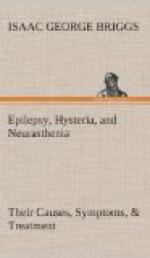It seems a trifle to let a child have the run of cake plate or sweet-tray, or to stay up “just another five minutes, Mummy!” to avoid a howl, but these are the trifles that sow acts to reap habits, habits to reap character, and character to fulfil destiny. It is selfish of parents to avoid trouble by not teaching their children habits of obedience, self-restraint, order and unselfishness. Between five and ten is the age of greatest imitation, when habits are most readily contracted.
Come to no decision until hearing the child’s wishes or statements, and thinking the matter out; having come to it, be inexorable despite the wiles, whines and wails of a subtle child. Reduce both promises and threats to a minimum, but rigidly fulfil them, for a threat which can be ignored, and a promise unfulfilled, are awful errors in training a child.
Persuade, rather than prohibit or prevent, a child from doing harmful actions. If it wants to touch a hot iron, say clearly it is hot, and will burn, but do not move it. Then, if the child persists, it will touch the iron tentatively, and the small discomfort will teach it that obedience would have been better. Let it learn as far as possible by the hard, but wholesome, road of experience.
Makeshift answers must never be given to a child. Awkward questions require truthful answers, even though these only suggest more “Whys?”
Sentimentality must be nipped promptly in the bud, and an imaginative and humorous view of things encouraged. The child must be taught to keep the passions under control, and to face pain (that great educator which neurotic natures feel with exaggerated keenness) with fortitude.
Fear must be excluded from a child’s experience. “Bogies!” “Ghosts!” “Robbers!” and “Black-men!” if unintroduced, will not naturally be feared. The mental harm a highly strung child does by rearing most fearsome imaginings on small foundations is incalculable, and has led more than one to an asylum.
Try to train the child to go to sleep in the dark, but if it is frightened give it a nightlight. As Guthrie says, the comfort derived from the assurance that Unseen Powers are watching over it, is small compared to that given by a nightlight. He mentions a child who, when told she need not fear the dark because God would be with her, said: “I wish you’d take God away and leave the candle.”
If the child wakes terrified, it is stupid and wicked to call upstairs: “Go to sleep!” A child cannot go to sleep in that state, and a wise mother will go up and softly soothe the frightened eyes to sleep.
Neuropathic children often have night terrors within an hour or two of going to bed. Piercing screams cause a hasty rush upstairs, where the child is found sitting up in bed, crouching in a corner, or trying to get out of door or window. His face is distorted with fear and he stares wildly at the part of the room in which he sees the terrifying apparition. He clings to his mother but does not know her. After some time he recovers, but is in a pitiful state and has to have his hand held while he dozes fitfully off. He often wets the bed or passes a large amount of colourless urine. Medical treatment is imperative.




